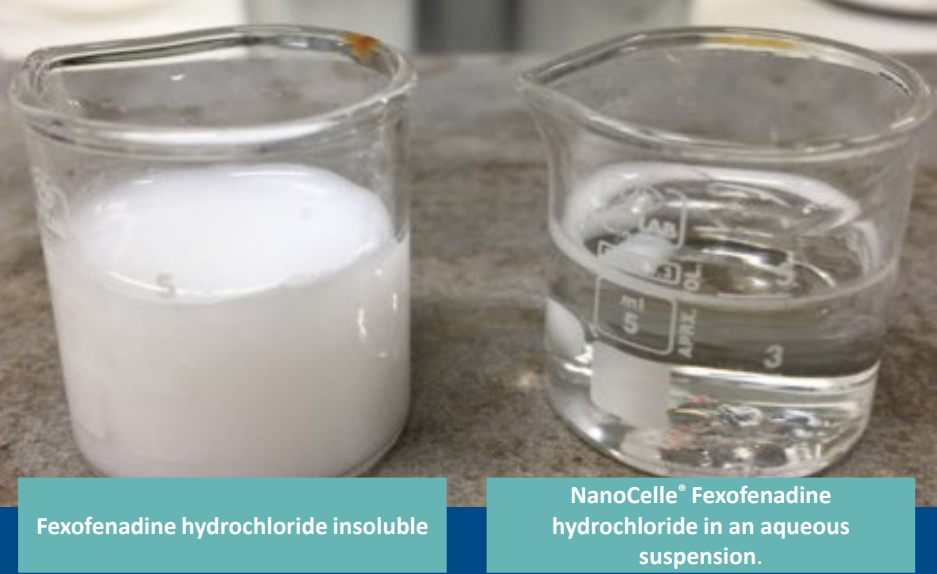NanoCelle Fexofenadine
Background
Fexofenadine hydrochloride is a peripheral H1-receptor antagonist with anti-allergy actions. However, its oral administration and bioavailability are limited to about 35% due to its low water solubility, low passive permeability, and efflux by p-glycoprotein.1 Therefore, it is important to explore and develop a better delivery system to increase the bioavailability of fexofenadine hydrochloride.
Nanotechnology has been successfully used in medicine to increase the bioavailability of drugs such as anti-cancer agents. Nano-delivery in the form of an agent packaged in micelles can protect the agent from destruction by enzymes and can promote increased intake through phagocytosis by macrophages. Therefore, a nano-delivery platform could be used to increase fexofenadine hydrochloride’s bioavailability as previously reported for other APIs.
From a production point of view, Medlab’s NanoCelle® process has obvious API delivery advantages over oral-gastrointestinal tract-delivered APIs, namely a more rapid–rate of delivery to the systemic circulation. Medlab’s NanoCelle® technology utilises readily available pharmaceutical-grade materials. The processing method can be easily completed in a single day’s production using standard pharmaceutical liquid manufacturing equipment / industrial techniques and can be scaled up for high-volume production. More importantly, it is a replicable procedure that with minor adjustments can be applied to a wide variety of active ingredients both nutritional and pharmaceutical.
Hypothesis
A water-soluble fexofenadine hydrochloride preparation formulated with Medlab’s NanoCelle® technology will demonstrate an enhanced absorptive rate of the API (in vivo) and hence concentration in the systemic circulation following oro-buccal administration, as compared to the available oral administered tablets that are administered orally where absorption is via the gastrointestinal tract. The aim is to achieve an approximate plasma concentration of fexofenadine hydrochloride of 150 hg/mL with multiple successive administered doses over 6 to 8 hours (the target plasma concentration).
Left: Fexofenadine hydrochloride in water (insoluble).
Right: NanoCelle® Fexofenadine hydrochloride (water soluble)
NanoCelle® Fexofenadine at 9mg/ml - completely water soluble
Particle size = 10.6nm neatly packed




